В пучине бренного мира. Японское искусство и его коллекционер Сергей Китаев - [66]
On the strip of paper attached at the bottom of the print, Kitaev wrote the version of the story known to him. (translated here from the Russian): “Her husband had been crippled by the enemy. In order to propitiate the gods who might heal him, she vowed to bathe one hundred days in a row in a sacred waterfall, but the enemy killed her. Her ghost informed the husband when it would be feasible to finish off the enemy, and justice was restored: the enemy perished”. Hatsuhana’s husband was crippled when he injured his knee while searching the country for the man who killed his father. Hatsuhana carried him to a sacred waterfall, under which she prayed until she died. Her husband recovered and killed the murderer. Hatsuhana’s ghost then appeared, rising from the waters.
Early Life and Naval Heritage
Sergei Nikolaevich Kitaev was born June 10 (Gregorian calendar: 22), 1864, in the village of Klishino on the Oka River in Ryazan province (now a part of Moscow province), where the Kitaevs had their family estate. He belonged to a well-to-do family bearing the rank of hereditary honorable citizens[209]. Most probably his family made its money from the local sailcloth factory, which had provided sails for the navy since the time of Peter the Great – hence the naval connection of the future collector and his brothers. From the age of fourteen, Kitaev was educated at the Naval School (later renamed Naval Corps) in Saint Petersburg. He graduated in 1884 salutatorian (his name was incised and gilded on the marble Board of Honor). He served as an officer in Saint Petersburg and on the ships of the Pacific fleet until 1905 and, afterward, in Petersburg until 1912. His highest rank in service was Colonel of the Admiralty (“colonel” because in his last years he served on shore), and when he was discharged due to ill-health, he was promoted to the rank of Major General of the Admiralty (a uniquely Russian title). One very blurred photograph of Kitaev from a Japanese newspaper of 1918 is known, as well as a description from a Russian secret police report of 1904: “medium height, a black French-style beard, mustache pointed up, wears a black-rimmed pincenez[210].”
Kitaev exhibited at the Imperial Academy of Arts and in the Society of Watercolor Artists. His elder brother, Vasily Kitaev (1849–1894), was also in the navy and an artist; another brother, Alexander (c. 1852–?), was a naval officer who spent time in Nagasaki and published essays about his Far Eastern travels[211]. Yet another brother, Vladimir (1855–1920), ended his life as an émigré in Japan, and died in Nagasaki.
Original and Growing Collection
There are two long letters written by Kitaev to the previously mentioned Pavel Pavlinov in which he describes his collection and shares his views on Japanese art. These letters, given by Pavlinov to the Pushkin in 1959, and a list (the “Brief List”) in Kitaev’s hand of his collection found in the boxes with his prints, yield an engaging portrait of the collector and outline of his original collection. The letters to Pavlinov were written on the 15th (28) and the 20th of August (2 September), 1916, in anticipation of Kitaev’s selling the collection to the Russian state. While in a generally good state of preservation, the letters are marred with comments and underlinings in ballpoint ink and pencil by an overzealous researcher, presumably Voronova[212].
Kitaev did not limit himself to woodblock prints. In his Brief List he enumerates the following groups: hanging scrolls – 270; screens (including one purportedly by Ogata Kо̄rin [1658–1716] – 4; handscrolls – 12 (including one purportedly by Katsushika Hokusai [1760–1849]); watercolors – 650 large and 570 small; ink sketches – 1900[213]. Besides these, there was a group of thirteen hundred photographs of Japanese life (street scenes, festivals, customs and the like), thematically grouped in albums, and three hundred negatives[214]. There were hand-colored glass slides for a magic lantern taken, for the most part, from prints on historical and mythological subjects. There were hundreds of books and albums, and finally, thousands of prints. Kitaev writes:
These are the cities where I was buying: Tokyo, Kyoto, Yokohama, Osaka, Kobe, Shimonoseki, Nagazaki, Hakodate, Nikko, Nagoya, Tsuruga, Kagoshima. In villages: Otsu, Mianoshta [Miyanoshita at Hakone], Inasa, Atami. There were other places, but their names I do not remember. My agents (ojiji san – “old men”) canvassed the length and breadth of J[apan] for several years[215].
E-6
Letter from Sergei Kitaev to Pavel Pavlinov
Aug. 20, 1916. Department of Manuscripts, Pushkin State Museum of Fine Arts, Moscow (stock 9, inventory II, document 608). Kitaev writes that he has all fifteen volumes of the rare first edition of Hokusai’s Manga. The 2008 Pushkin Catalogue excludes these lines in its transcription of the text and inserts a few words to smooth the gap. There are ten offending graffiti marks on this page, including, in the upper righthand corner “A Letter of S. N. Kitaev to the artist P. Ia. Pavlinov”, and the underlining of names of Japanese artists. Kitaev uses letterhead from the Chernovo Coal Mines of the Zamyatin Brothers Company.
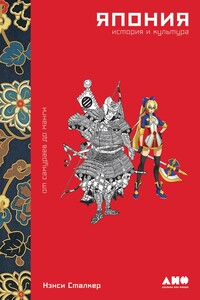
Японская культура проникла в нашу современность достаточно глубоко, чтобы мы уже не воспринимали доставку суши на ужин как что-то экзотичное. Но вы знали, что японцы изначально не ели суши как основное блюдо, только в качестве закуски? Мы привычно называем Японию Страной восходящего солнца — но в результате чего у неё появилось такое название? И какой путь в целом прошла империя за свою более чем тысячелетнюю историю? Американка Нэнси Сталкер, профессор на историческом факультете Гавайского университета в Маноа, написала не одну книгу о Японии.
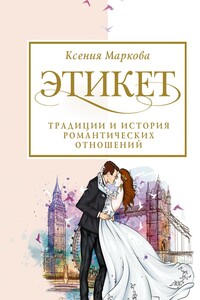
Ксения Маркова, специалист по европейскому светскому этикету и автор проекта Etiquette748, представляет свою новую книгу «Этикет, традиции и история романтических отношений». Как и первая книга автора, она состоит из небольших частей, каждая из которых посвящена разным этапам отношений на пути к алтарю. Как правильно оформить приглашения на свадьбу? Какие нюансы учесть при рассадке гостей? Обязательно ли невеста должна быть в белом? Как одеться подружкам? Какие цветы выбирают королевские особы для бракосочетания? Как установить и сохранить хорошие отношения между новыми родственниками? Как выразить уважение гостям? Как, наконец, сделать свадьбу по-королевски красивой? Ксения Маркова подробно описывает правила свадебного этикета и протокола и иллюстрирует их интересными историями из жизни коронованных особ разных эпох.
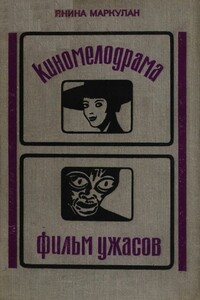
Настоящая книга Я. К. Маркулан, так же как и предыдущая ее книга «Зарубежный кинодетектив», посвящена ведущий жанрам буржуазного кинематографа. Киномелодрама и фильм ужасов наряду с детективом и полицейско-шпионским фильмом являются важнейшим оплотом буржуазной массовой культуры. Они собирают наибольшее количество зрителей, в них аккумулируются идеи, моды, нормы нравственности и модели поведения людей капиталистического мира. В поле внимания автора находится обширный материал кинематографа капиталистических стран, в том числе материал фильмов, не шедших в нашем прокате.
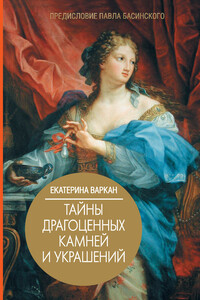
Изделия из драгоценных камней — не просто аксессуары, все они имеют особое значение в жизни своих обладателей. Изумительной красоты кольца, трости, камни, карманные часы, принадлежавшие царям и дворянам, императрицам и фавориткам, известным писателям, не только меняли судьбы хозяев, они творили саму историю! Перед Вами книга об уникальных шедеврах ювелиров и увлекательных историях вокруг знаменитых драгоценностей. Какие трости предпочитал Пушкин? Правда ли, что алмаз «Шах» стал платой за смерть Грибоедова? Что за кольцо подарил Лев Толстой своей жене Софье Андреевне? Какой подарок Александру I сделала Жозефина Богарне? Какова тайна бриллианта «Санси», и что за события связаны с жемчужиной «Перегрина»? На эти и другие вопросы отвечает автор в своей книге.
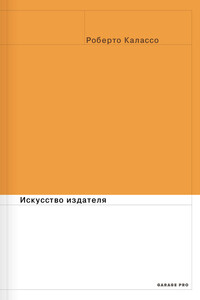
В книге Роберто Калассо (род. 1941), итальянского прозаика и переводчика, одного из зачинателей и многолетнего директора известного миланского издательства Adelphi, собраны эссе об издательском деле – особом искусстве, достигшем расцвета в XX веке, а ныне находящемся под угрозой исчезновения. Автор делится размышлениями о сущности и судьбе этого искусства, вспоминает о выдающихся издателях, с которыми ему довелось быть знакомым, рассказывает о пути своего издательства – одного из ярчайших в Европе последних пятидесяти лет.

"Ясным осенним днем двое отдыхавших на лесной поляне увидели человека. Он нес чемодан и сумку. Когда вышел из леса и зашагал в сторону села Кресты, был уже налегке. Двое пошли искать спрятанный клад. Под одним из деревьев заметили кусок полиэтиленовой пленки. Разгребли прошлогодние пожелтевшие листья и рыхлую землю и обнаружили… книги. Много книг.".